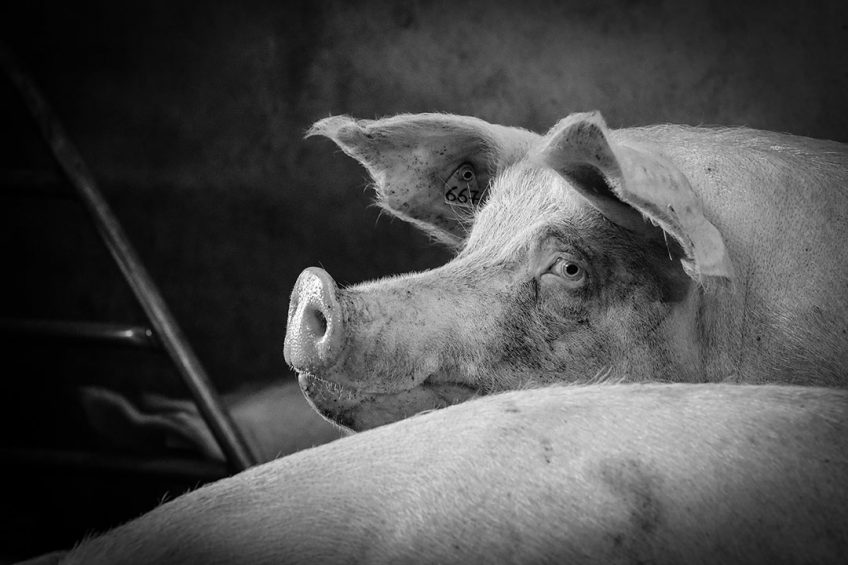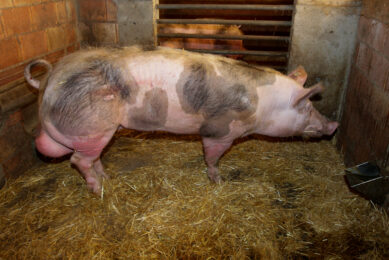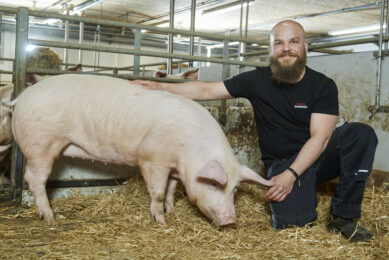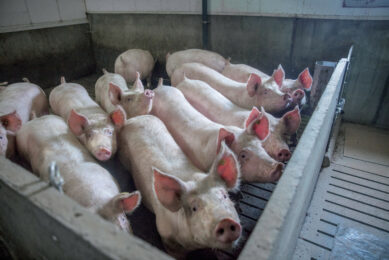A new boar pheromone to mitigate infertility

Seasonal infertility can have a serious impact on the performance of a breeding unit. There are ways to overcome the effects of the heat in summer. At Texas Tech University, an entirely novel method was developed on the basis of pheromones.
As springtime arrives, many know what is coming. Warm weather, even hot weather. The slump in summer-fall sow reproduction is found around the world. Understanding the biology of the pig helps to manage seasonal infertility. Today there are new tools to address the expected slump in summer and early fall reproductive challenges. The pig was domesticated, in part, because they can breed year-round. Even though they can breed year-round, pork producers are aware that summer and early fall rates of reproductive performance are lower than the rest of the year.
The scientific literature is consistent on its reported effects of seasonal infertility. In summer and early fall, sows have a longer wean-to-oestrus interval, lower breeding rates and lower farrowing rates. Litter size is less-often impacted by seasonal infertility.
Lower breeding and farrowing rate
The single greatest economic hit from seasonal infertility is a lower breeding and farrowing rate. The lower breeding rate during warm weather is often associated with oestrus behaviour that is suppressed or not as easily observed. The lower farrowing rate is often due to loss of pregnancy, especially early in pregnancy (called early disruption of pregnancy).
In 2017, the scientists De Rensis, Ziecik and Kirkwood reviewed the scientific literature on seasonal infertility. They found a 9 to 14% reduction in breeding and pregnancy rates from studies from around the world. They reported that some farms can have as much as a 30% reduction in farrowing success rates (combining breeding and pregnancy success).
One approach in managing seasonal infertility is to not allow sows to become heat stressed. It is known that when the air temperature is about 25ºC (77ºF), fewer sows express behavioural oestrus. One could air condition or cool breeding barns to minimise warm-weather suppression of oestrus behaviour, but this is an expensive option that is rarely used in the field for sows. Seasonal infertility can be viewed as a behavioural problem. When sows are warm, some will not express sexual behaviours and therefore not be bred.
Benefits of a novel boar pheromone on sow production
At Texas Tech University, scientists recently reported about benefits of a novel boar pheromone on sow reproduction. Having performed extensive chemistry on boar and sow saliva, they learned that the boar pheromone was not a single molecule, but 3 molecules (androstenone, androstenol and quinoline). When the 3 molecules are together in a spray that mimics boar saliva, one gets the full sexual behavioural response. A field trial over much of the year showed that by using this spray (called Boar Better*) on 12 farms, litter size (pigs born alive) was increased and so were breeding and farrowing rates. Then the question was asked if the spray might give a more consistent effect during periods of seasonal infertility.
The team at Texas Tech organised a summer study on the Southern High Plains of the USA. The large commercial farm used PIC genetics and they used post-cervical artificial insemination.
2 simple treatments were used:
- Control (management as usual); and
- The spray applied on post-weaning days to induce behavioural oestrus and reproductive success (increased breeding and farrowing rates and litter size).
Study with large number of sows
The study was performed on a large number of sows in a short breeding period during warm weather (July, 2018). The daily air temperatures ranged from a low of 12ºC (53ºF) to 42ºC (107ºF). A total of 1,874 sows were enrolled in the study. The measures of reproductive performance are shown in Table 1. Most terms are in common use. The term ‘Farrowing Success Rate’ was included as a way to combine the breeding rate and farrowing rate. The findings were highly significant in terms of reproductive performance. Sows given the spray Better (relative to control sows) had improved breeding rates, farrowing rates and litter sizes (Tables 2 and 3). The spray improved breeding rate 6.4% and farrowing rate 7.9%. The combined farrowing success rate was improved 12% when the spray was used. The numbers of live born piglets per litter was increased by over a 0.5 pigs per litter.
To evaluate the overall impact on a farm, a model was developed assuming one has 100 weaned sows that are eligible to be bred. The primary output for reproductive performance is the total pigs per batch. This measure blends any effects of breeding rate, farrowing rate and litter size. When the spray was used in the summer, it increased pigs per batch by over 25% (Table 4).
This is the only known, practical method to improve summer reproductive performance known at this time.
The Texas Tech team is exploring the mechanisms by which this novel pheromone improves reproductive performance. So far, they have not yet demonstrated any endocrine effects after application of the spray. But there is a quite pronounced behavioural effect. They spray can induce behavioural oestrus in sows that have suppressed or hidden behavioural oestrus. That explains why the breeding rate is improved with the spray. But the fact that more sows remain pregnant and that litter size is increased is likely because the quality of mating is improved. This means that more sows are bred around the time of ovulation improving the odds of a healthy pregnancy.
* Boar Better is a patented technology developed by the author and patented by Texas Tech University. Texas Tech University licensed the technology to Animal Biotech, a start-up company owned by the author and others. Boar better is sold in the USA by Animal Biotech and around the world by Vetoquinol.











